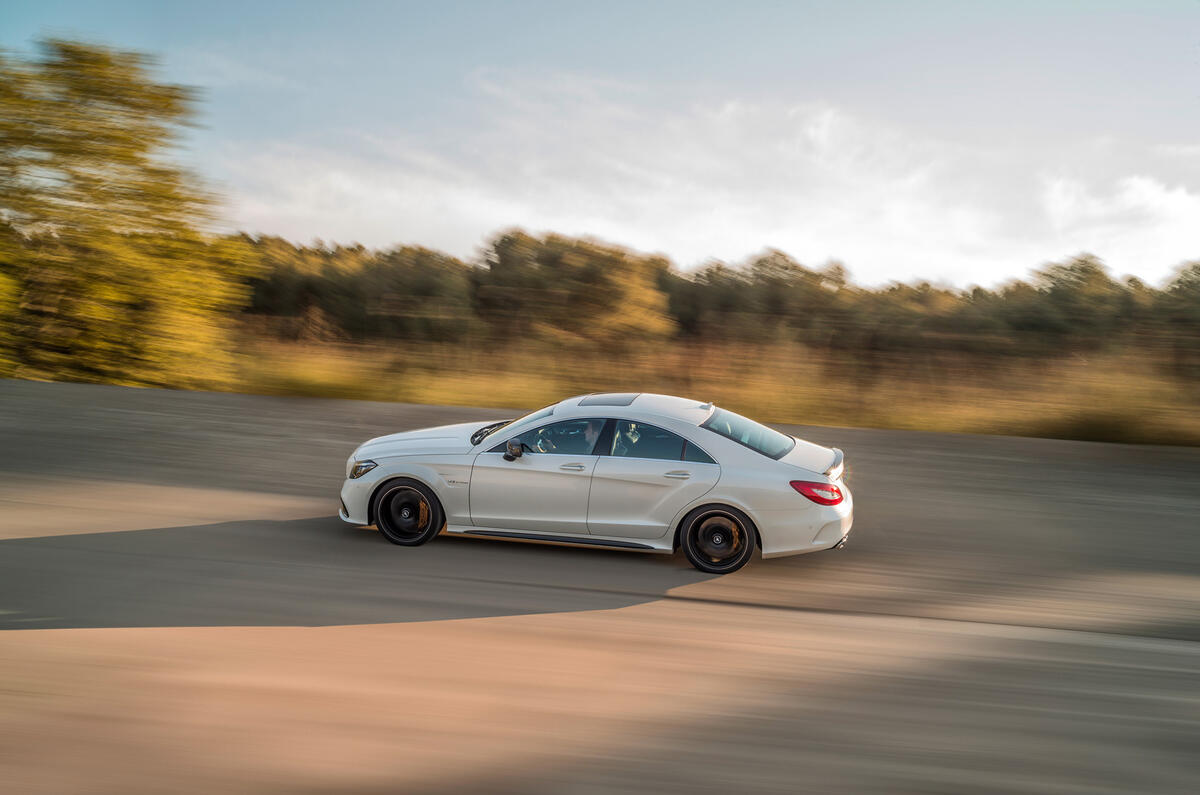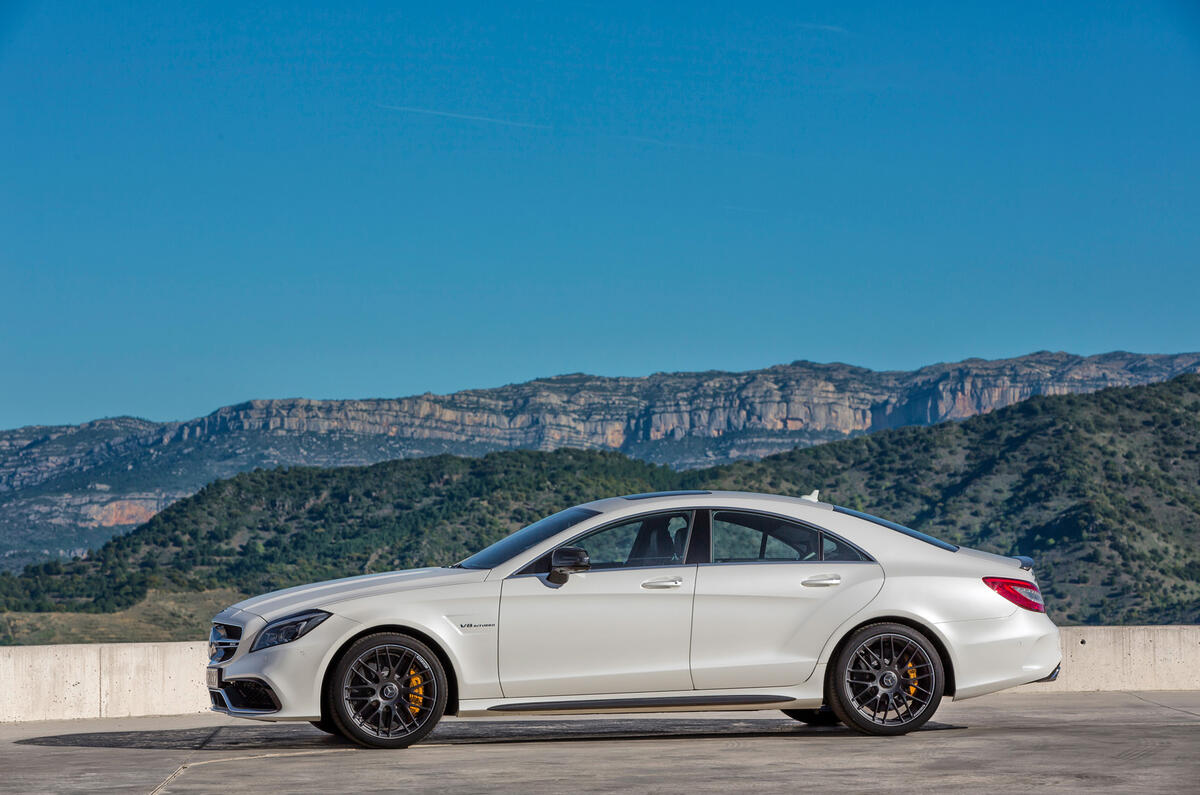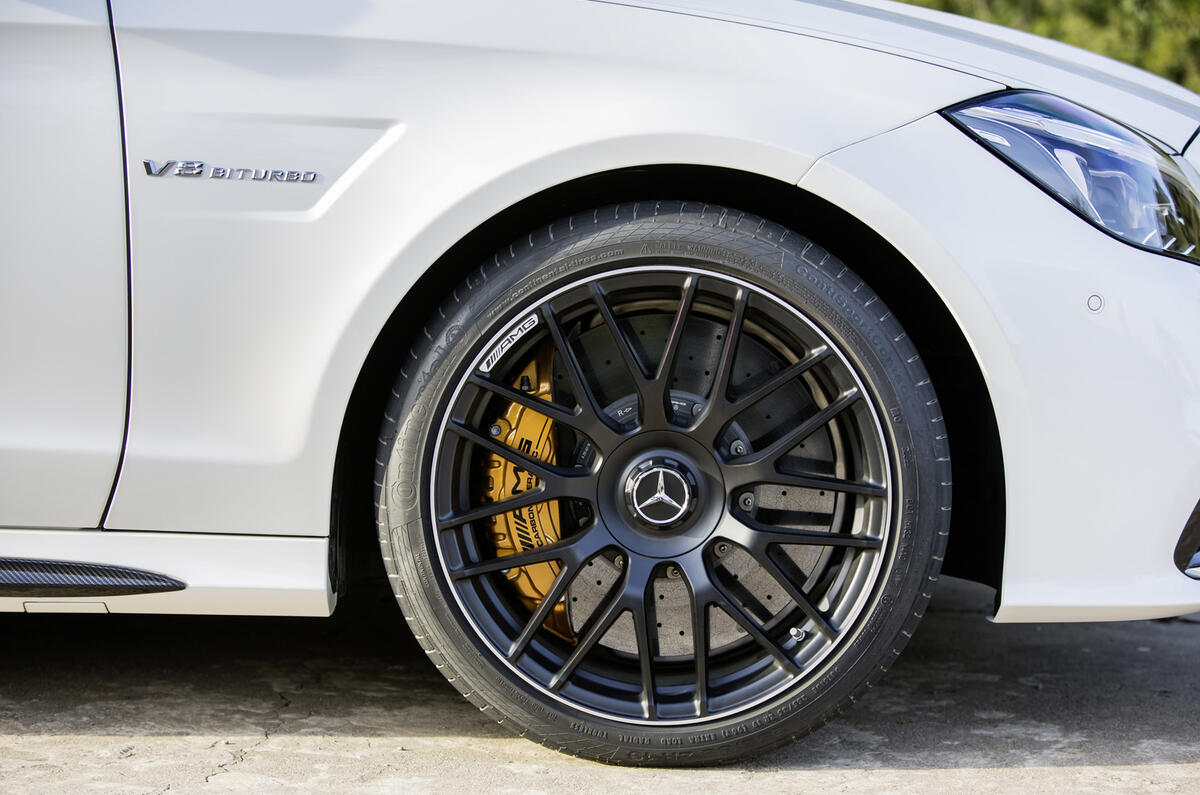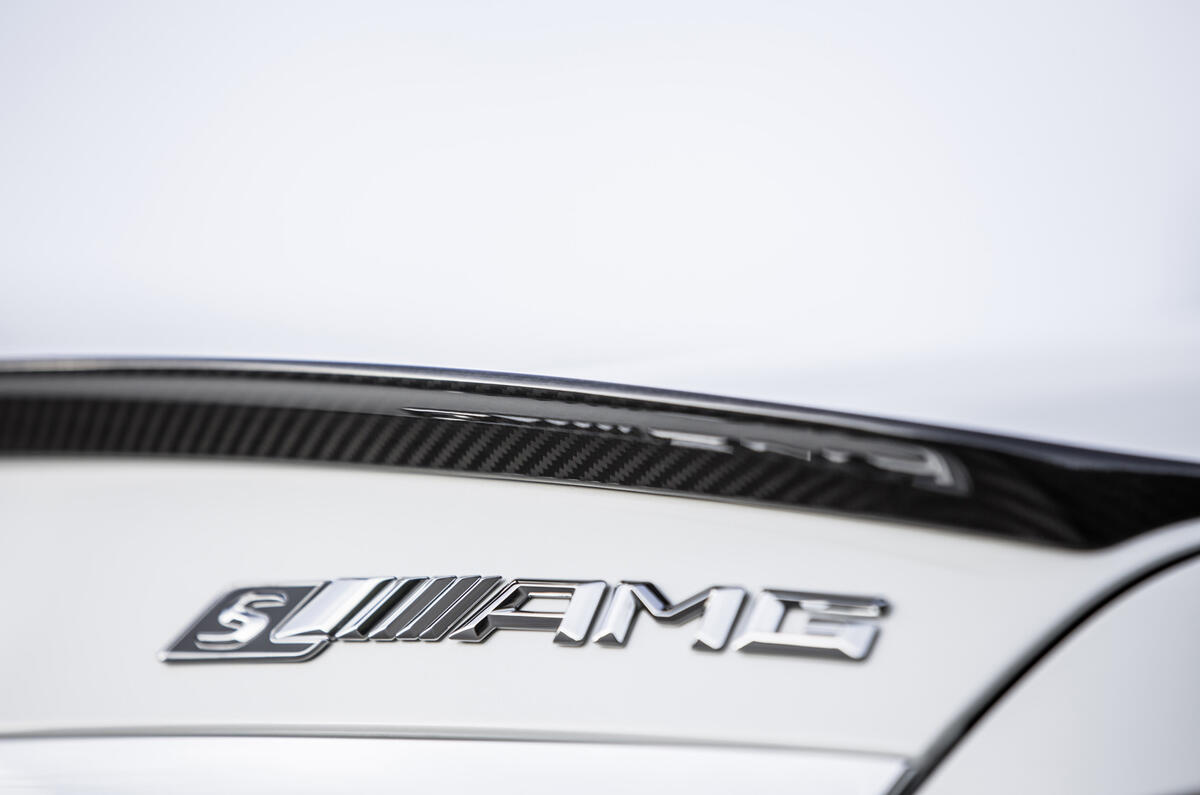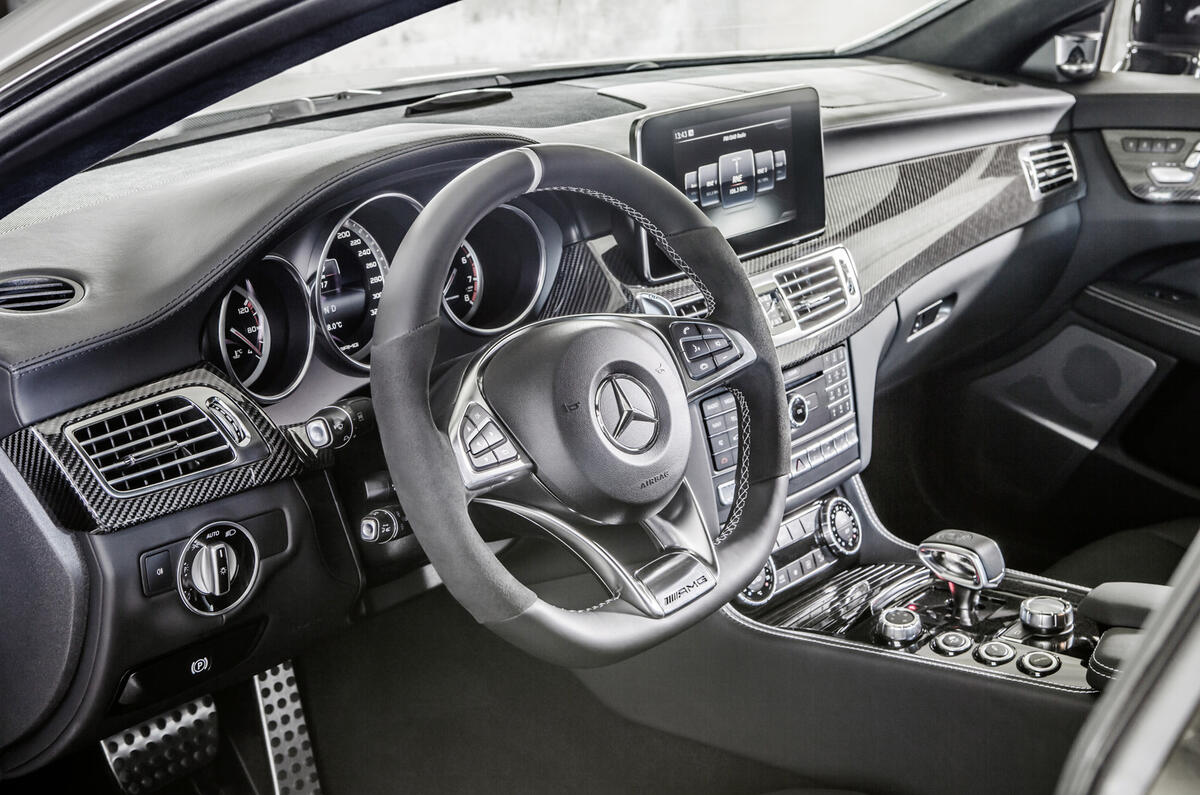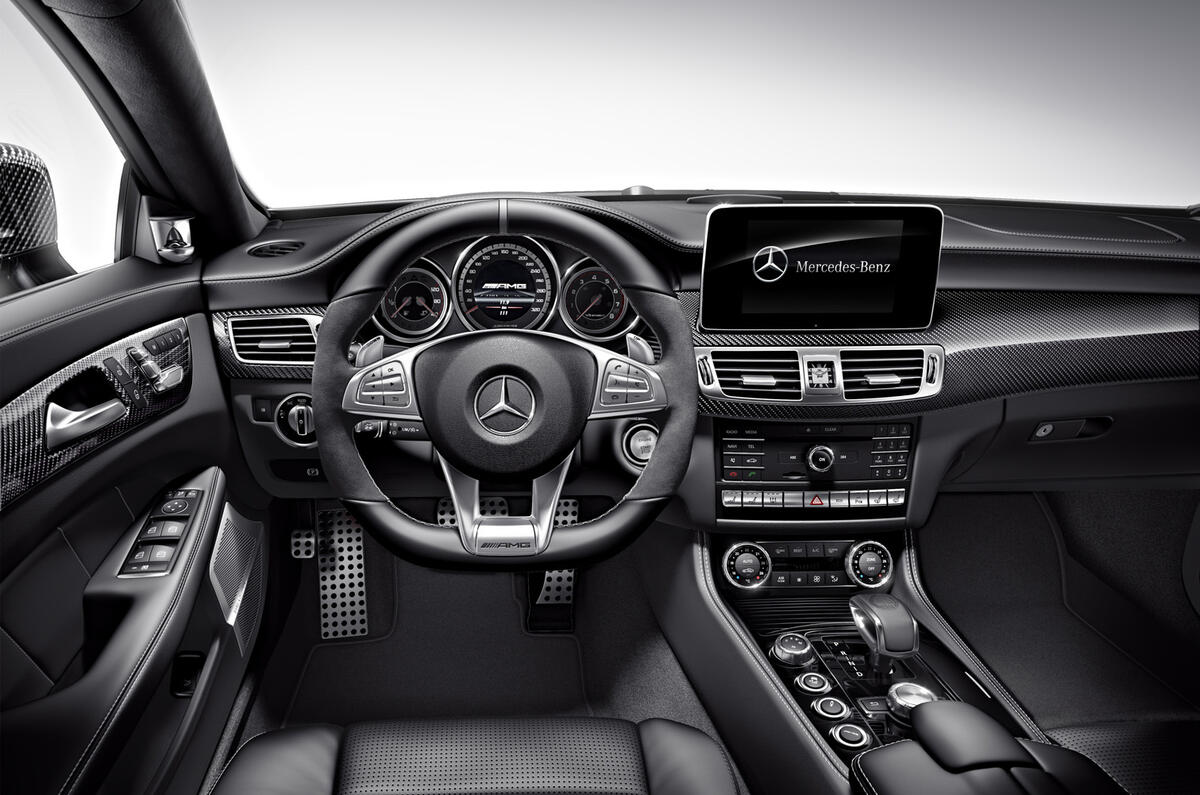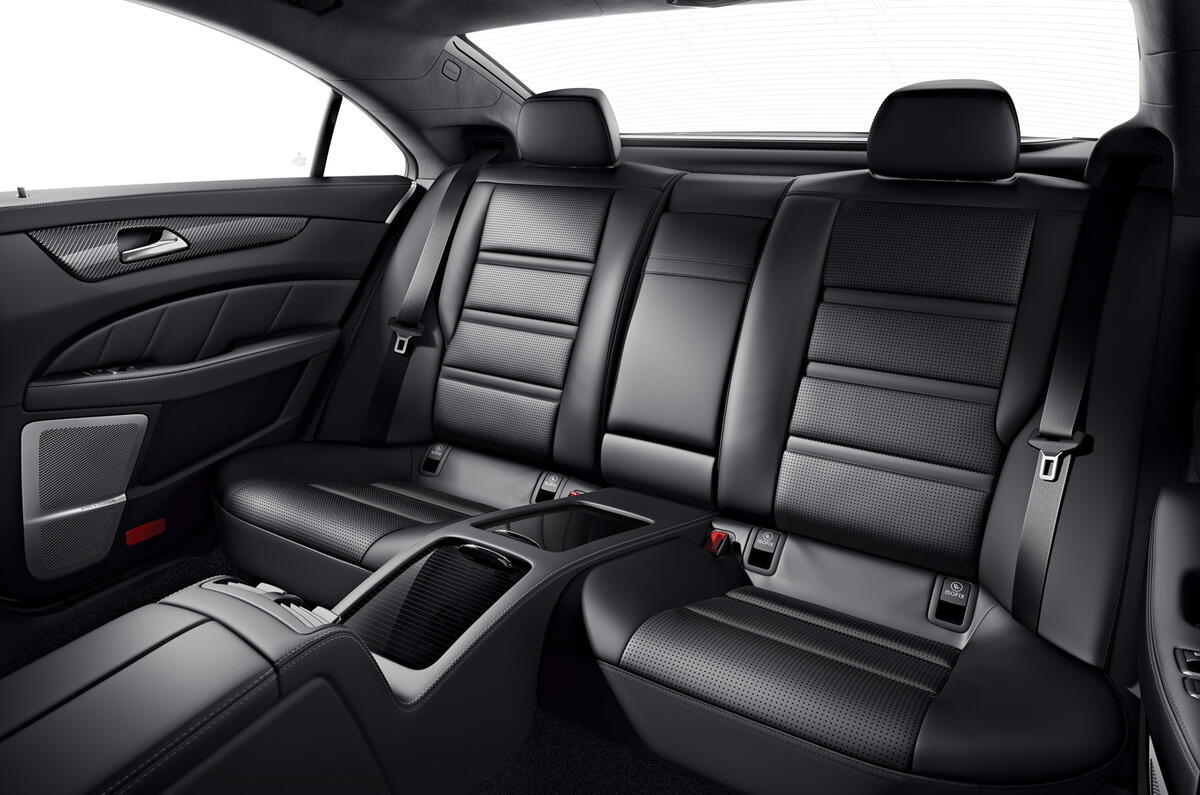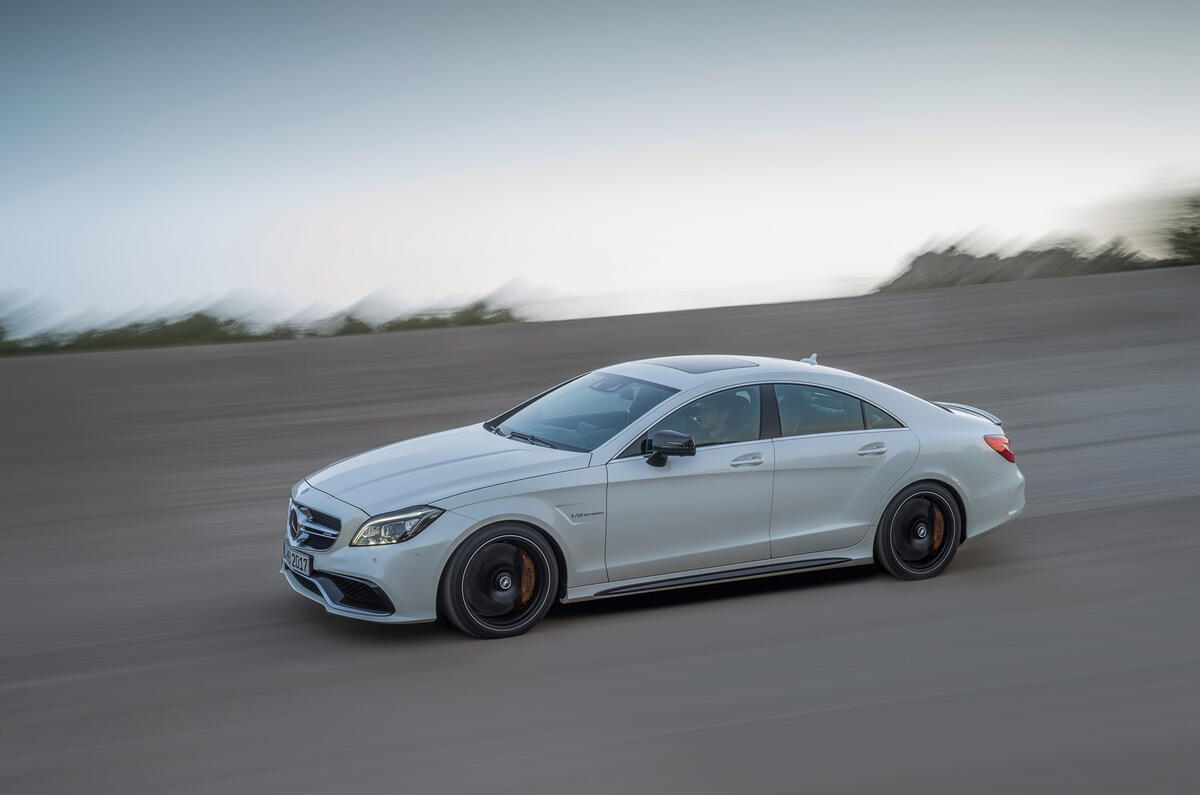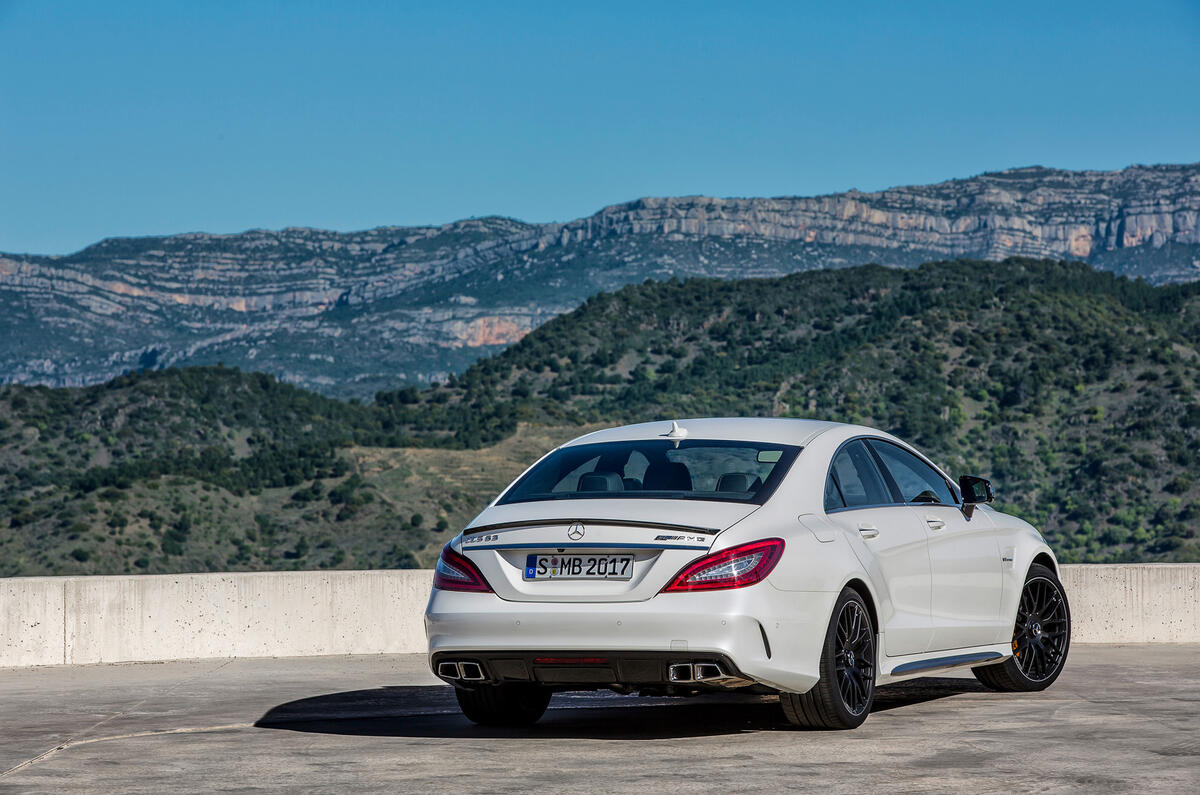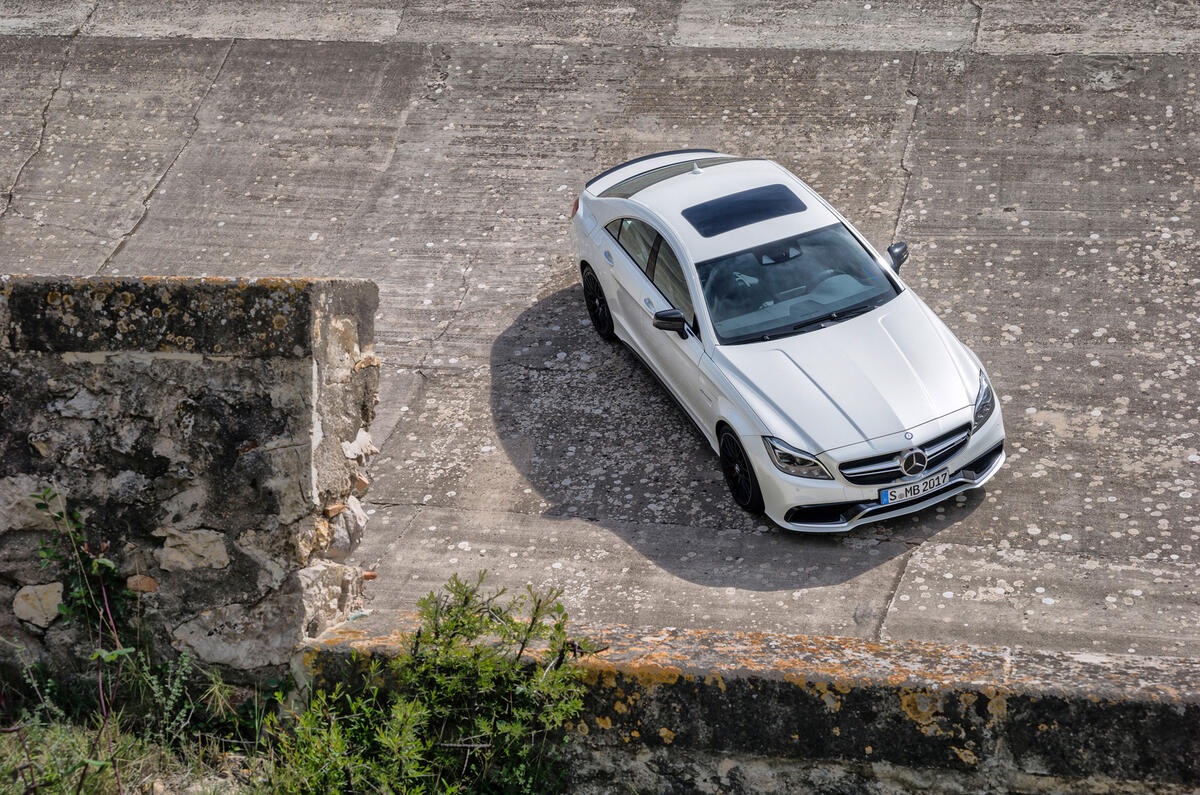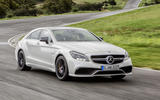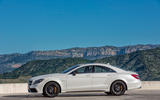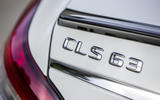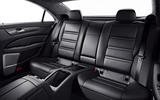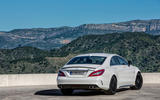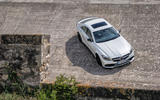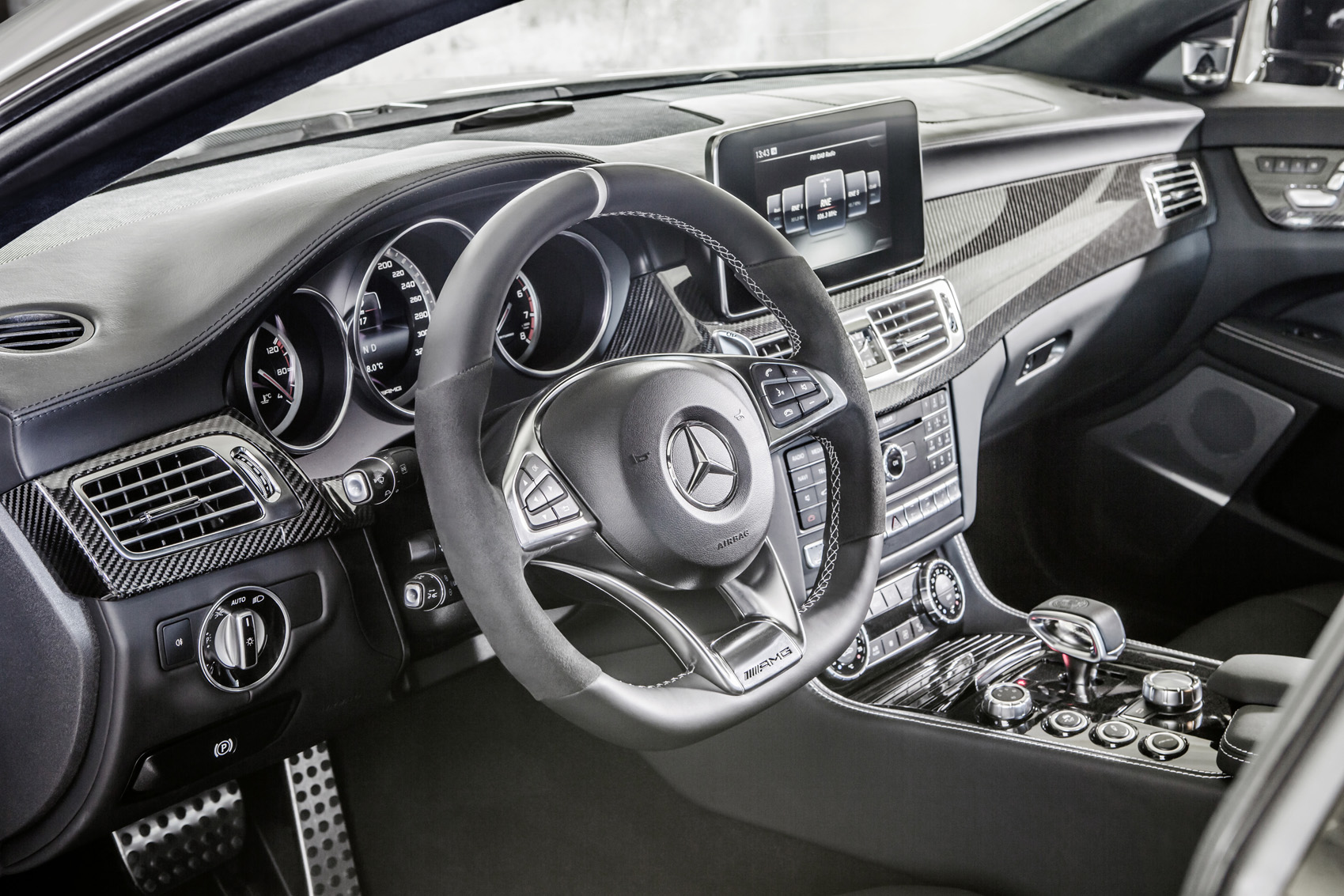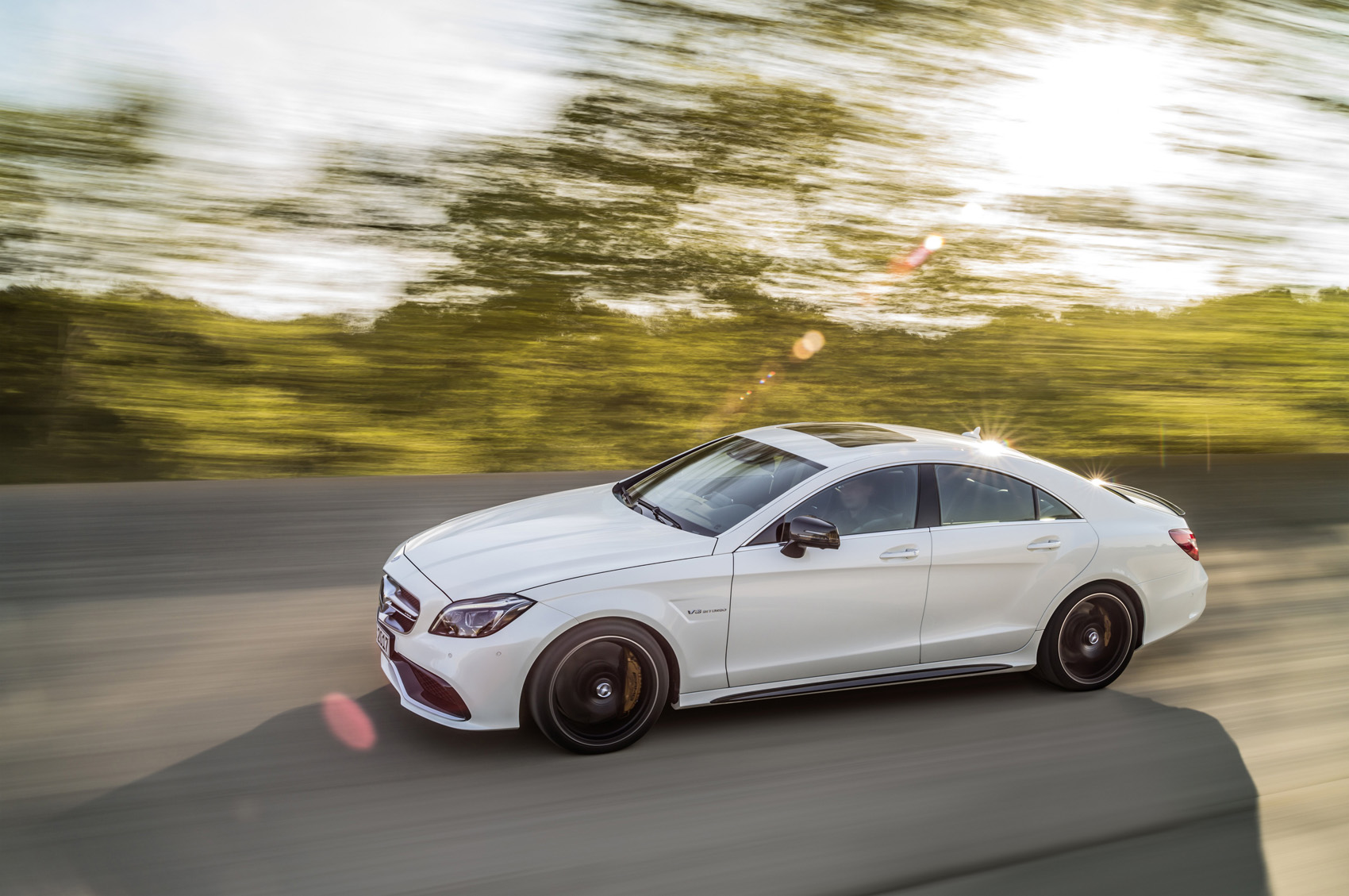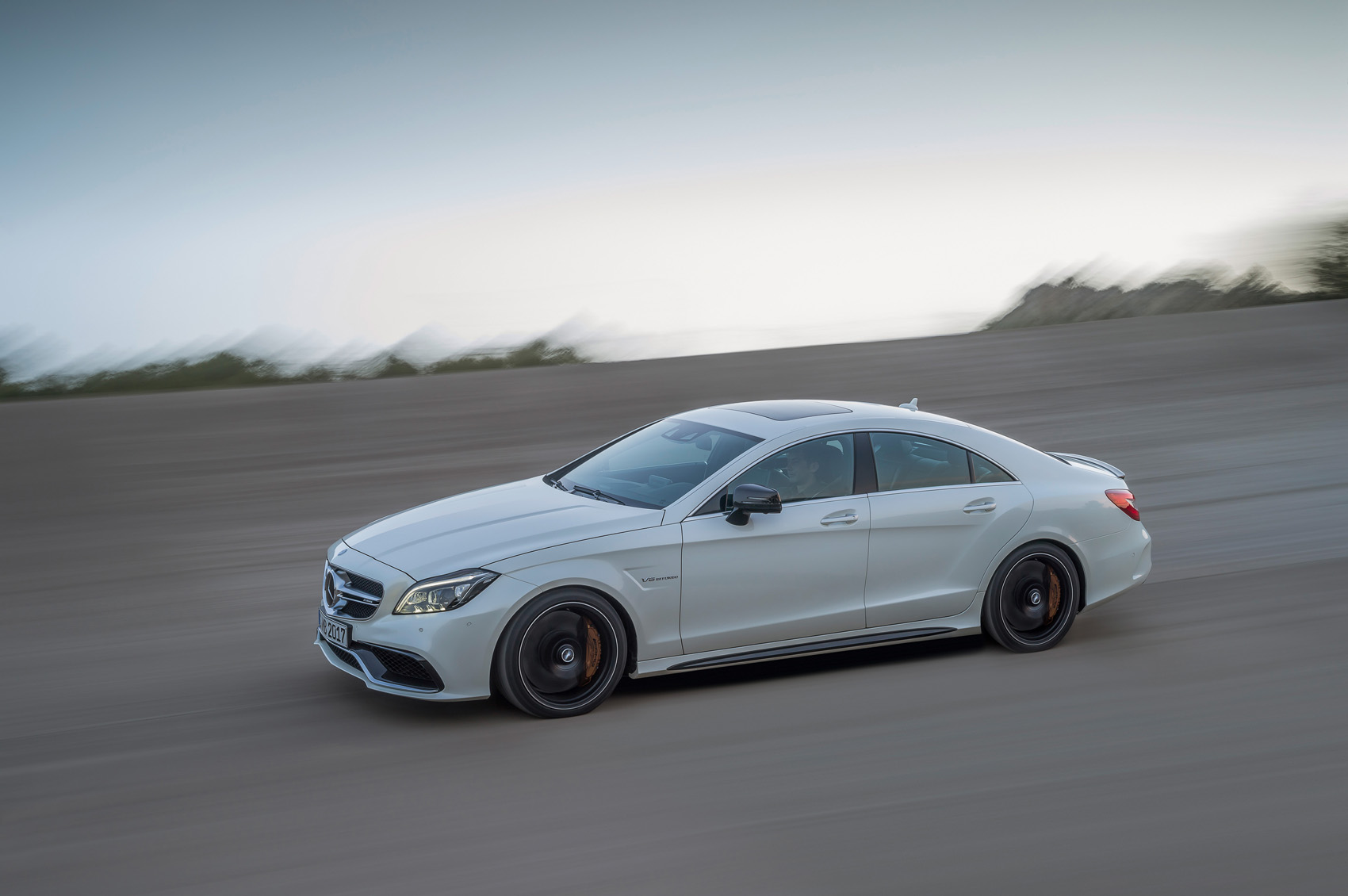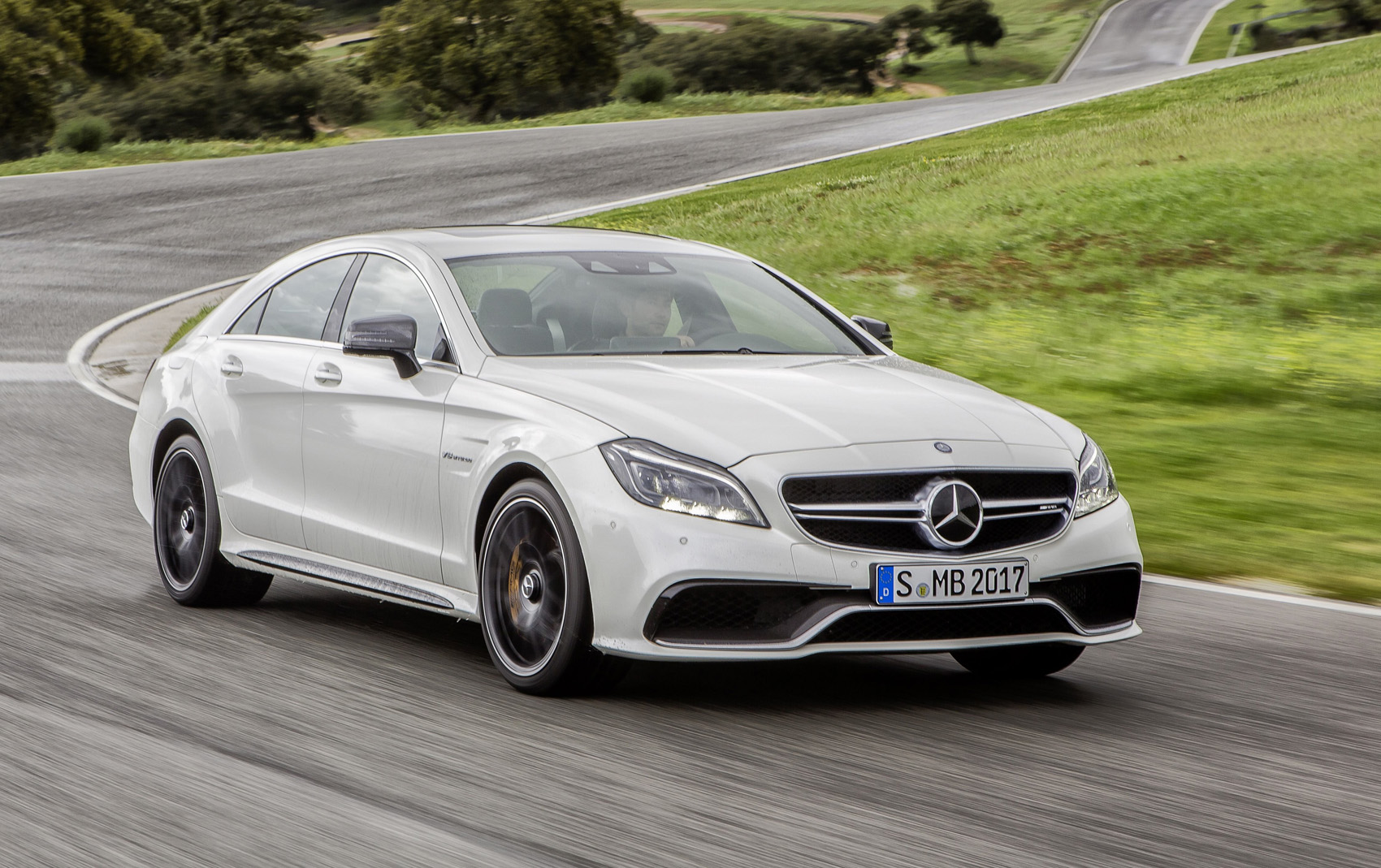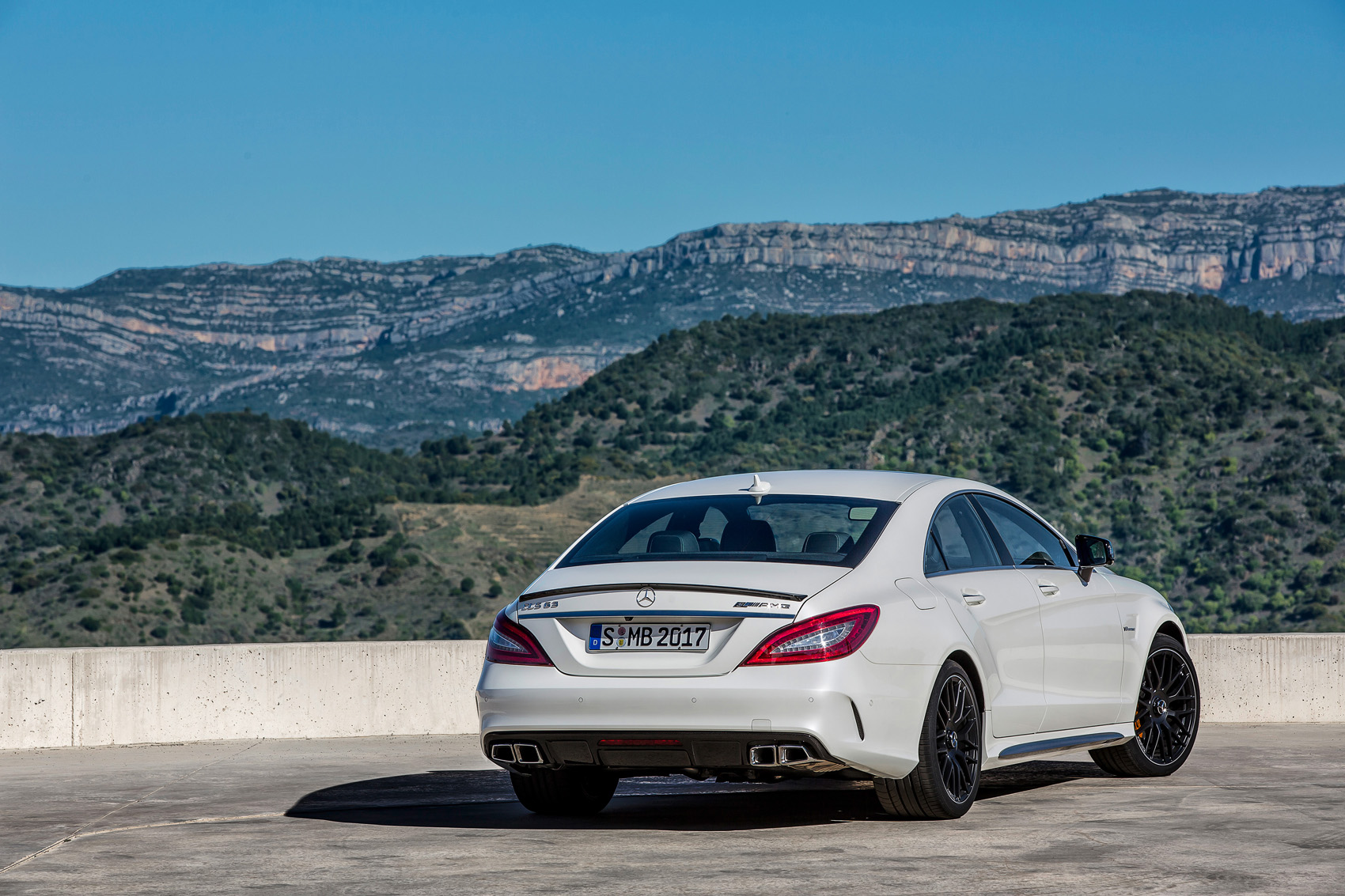Although we’re generally remarkably impressed with the inherent efficiency of modern forced-induction motor, why is it that we welcome the 5.5-litre, twin-turbocharged motor in the CLS 63 S with a mild sense of trepidation?
Mainly because we’ve been so won over by the depth of character and performance of the naturally aspirated 6.2-litre V8 it replaces. However, this engine not only has more grunt than the 6.2-litre V8 but is also 32 percent more efficient.
And in no installation does it make more sense than in the Mercedes-Benz CLS. We already know the four-dour coupé to be excellent luxury transport or for those craving extra practicality a shooting brake, and as a sort of high-end enthusiast’s limo it can justify having 576bhp better than most other Mercedes.
But there’s no point to having such extravagant outputs – or an equally extravagent price – if it’s not sensationally entertaining, as well as civilised executive transport. And that’s not an easily achieved compromise.
In 2014, the Mercedes-Benz CLS was given a facelift, which largely was condensed to a new front grille, bumper and headlights, while the inside was given a light sprucing up. The CLS 63 S gained a wet clutch version of its seven-speed automatic as AMG seeked faster shifting to help unlock its performance potential.



